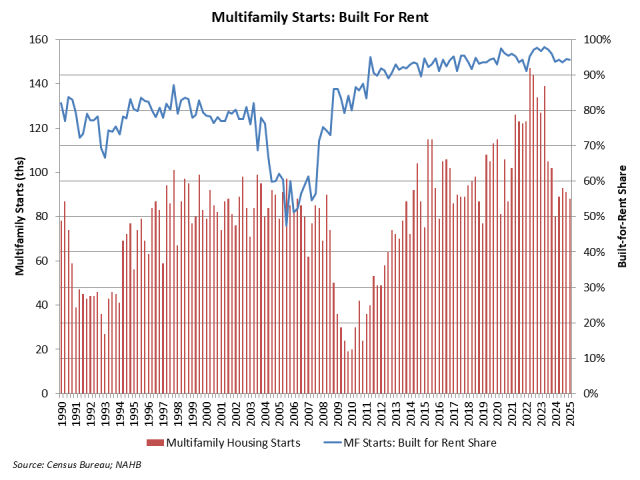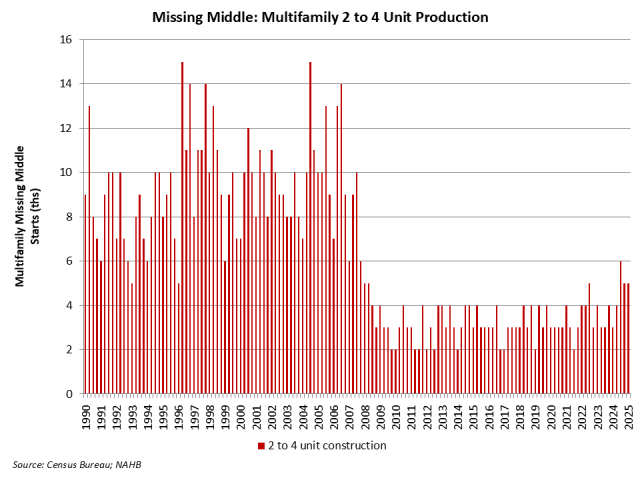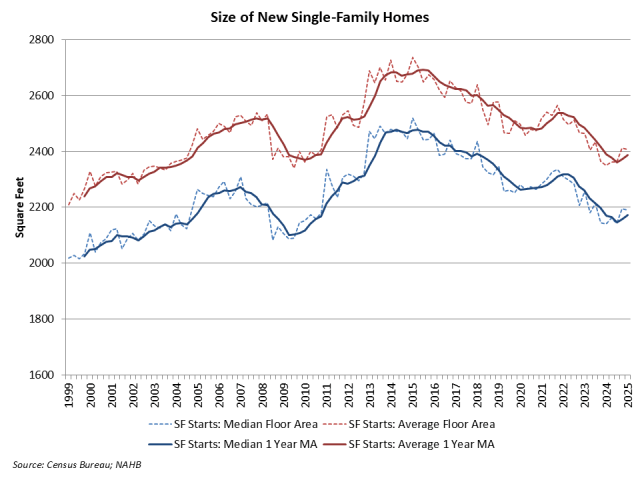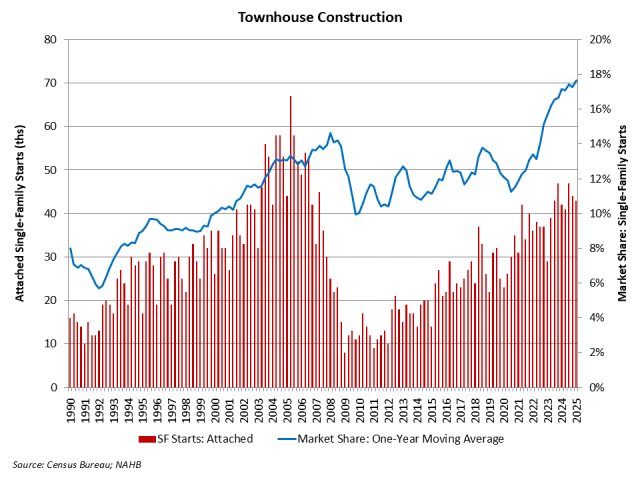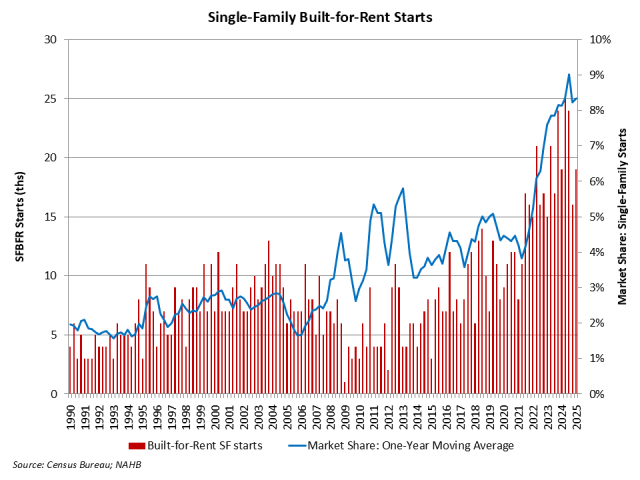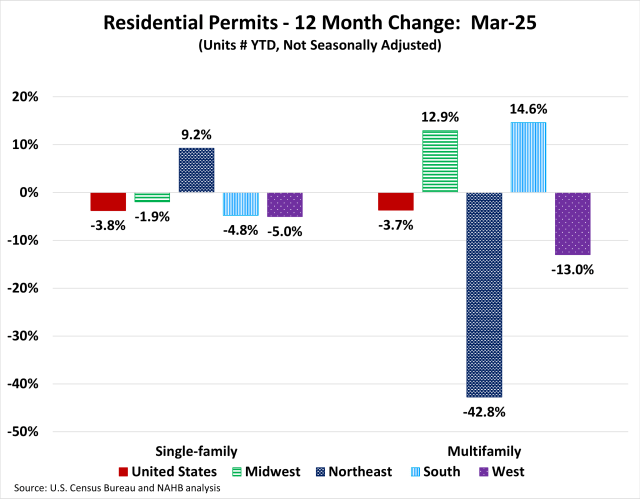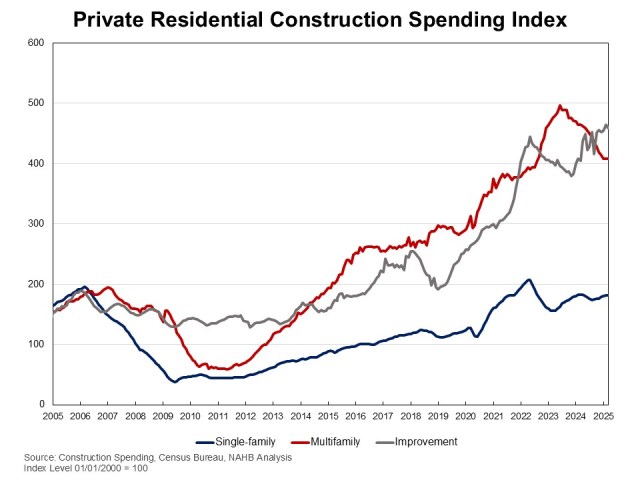94% Multifamily Built-for-Rent Share
Robert Dietz2025-05-23T08:20:52-05:00According to NAHB analysis of quarterly Census data, the count of multifamily, for-rent housing starts increased during the first quarter of 2025. For the quarter, 88,000 multifamily residences started construction. Of this total, 83,000 were built-for-rent. This was almost 11% higher than the first quarter of 2024. The market share of rental units of multifamily construction starts was 94% for the first quarter. A historical low market share of 47% for bult-for-rent multifamily construction was set during the third quarter of 2005, during the condo building boom. An average share of 80% was registered during the 1980-2002 period. For the first quarter, there were 5,000 multifamily condo unit construction starts, flat from a year ago. An elevated rental share of multifamily construction is holding typical apartment size below levels seen during the pre-Great Recession period. However, according to the first quarter 2025 data, the average square footage of multifamily construction starts fell back to 1,027 square feet. The median declined to 1,027 square feet. Discover more from Eye On Housing Subscribe to get the latest posts sent to your email.

